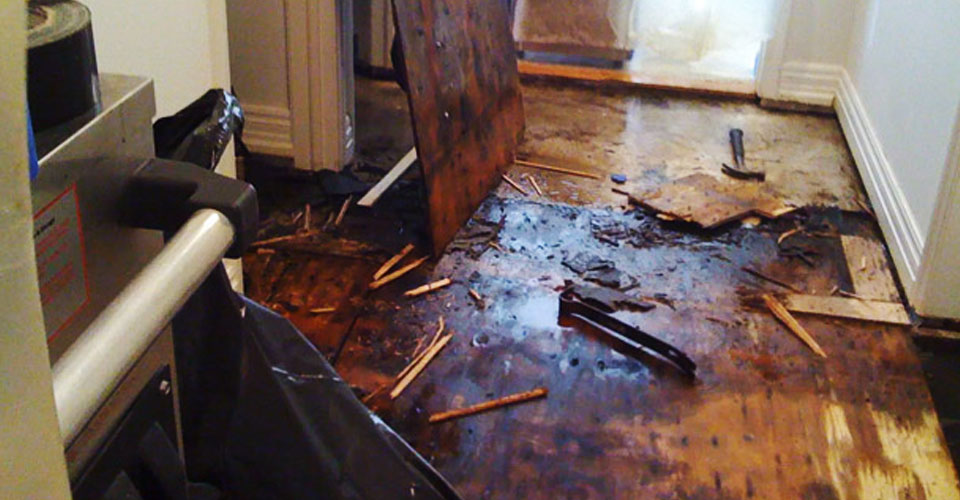Do's and also Don'ts Throughout Water Damage Emergencies.
Do's and also Don'ts Throughout Water Damage Emergencies.
Blog Article
Each person has got their personal piece of advice involving What You Can Do At Home To Prevent Fire And Water Damage.

Though water offers life, water intrusion on parts where it's not supposed to be can lead to damages. If the water saturates right into your framework, it can peel off away surfaces and wear down the structure. Mold as well as mold additionally thrive in a damp atmosphere, which can be hazardous for your health and wellness. Residences with water damages odor mildewy and also old.
Water can come from many sources such as typhoons, floods, ruptured pipelines, leakages, and sewer problems. In case you experience water damage, it would be great to understand some safety and security preventative measures. Right here are a few standards on how to handle water damages.
Do Prioritize Residence Insurance Coverage Coverage
Water damage from flood dues to hefty winds is seasonal. You can additionally experience a sudden flooding when a faulty pipeline suddenly breaks right into your home. It would certainly be best to have house insurance policy that covers both acts of God such as all-natural catastrophes, and emergency situations like busted plumbing.
Don't Fail To Remember to Switch Off Utilities
In the event of a catastrophe, specifically if you reside in a flood-prone location, it would certainly be recommended to switch off the major electrical circuit. This cuts off power to your entire residence, preventing electric shocks when water comes in as it is a conductor. Do not fail to remember to turn off the primary water line valve. Furnishings will move about as well as trigger damages when floodwaters are high. Having the main valve shut down avoids further damage.
Do Keep Proactive and Heed Weather Condition Alerts
Tornado floods can be really unforeseeable. Stay prepared and positive if there is a history of flooding in your community. Pay attention to evacuation warnings if you live near a river, lake, or creek . Obtain valuables from the first stage and also basement, after that put them on the highest feasible degree. Doing so decreases prospective home damages.
Do Not Ignore the Roofing System
You can prevent rain damage if there are no openings as well as leaks in your roofing system. This will certainly prevent water from moving down your walls and saturating your ceiling.
Do Take Note Of Tiny Leakages
A burst pipeline does not happen overnight. You might notice gurgling paint, peeling off wallpaper, water touches, water stains, or dripping sounds behind the walls. Have your plumbing repaired before it results in large damage.
Don't Panic in Case of a Ruptured Pipeline
Keeping your clearheadedness is important in a time of crisis. Because it will suppress you from acting quickly, worrying will only worsen the issue. Timing is crucial when it comes to water damage. The longer you wait, the even more damages you can anticipate. Therefore, if a pipe bursts in your home, instantly shut off your primary water valve to remove the resource. Then disconnect all electrical outlets in the location or shut off the circuit breaker for that part of your house. Lastly, call a reputable water damages remediation professional for support.
Water provides life, water breach on parts where it's not expected to be can result in damages. Residences with water damages smell old as well as stuffy.
Water damages from flood fees to hefty winds is seasonal. You might notice bubbling paint, peeling wallpaper, water touches, water discolorations, or dripping sounds behind the walls. When it comes to water damages, timing is crucial.
Some Do's & Don't When Dealing with a Water Damage
DO:
Make sure the water source has been eliminated. Contact a plumber if needed. Turn off circuit breakers supplying electricity to wet areas and unplug any electronics that are on wet carpet or surfaces Remove small furniture items Remove as much excess water as possible by mopping or blotting; Use WHITE towels to blot wet carpeting Wipe water from wooden furniture after removing anything on it Remove and prop up wet upholstery cushions for even drying (check for any bleeding) Pin up curtains or furniture skirts if needed Place aluminum foil, saucers or wood blocks between furniture legs and wet carpet Turn on air conditioning for maximum drying in winter and open windows in the summer Open any drawers and cabinets affected for complete drying but do not force them open Remove any valuable art objects or paintings to a safe, dry place Open any suitcases or luggage that may have been affected to dry, preferably in sunlight Hang any fur or leather goods to dry at room temperature Punch small holes in sagging ceilings to relieve trapped water (don't forget to place pans beneath!); however, if the ceiling is sagging extremely low, stay out of the room and we'll take care of it DO NOT:
Leave wet fabrics in place; dry them as soon as possible Leave books, magazines or any other colored items on wet carpets or floor Use your household vacuum to remove water Use TV's or other electronics/appliances while standing on wet carpets or floors; especially not on wet concrete floors Turn on ceiling fixtures if the ceiling is wet Turn your heat up, unless instructed otherwise

We had been shown that editorial on Reducing Your Risk Of Water And Fire Damage At Home from a good friend on our other web blog. Liked our piece? Please share it. Help another person find it. Thanks for going through it.
Report this page